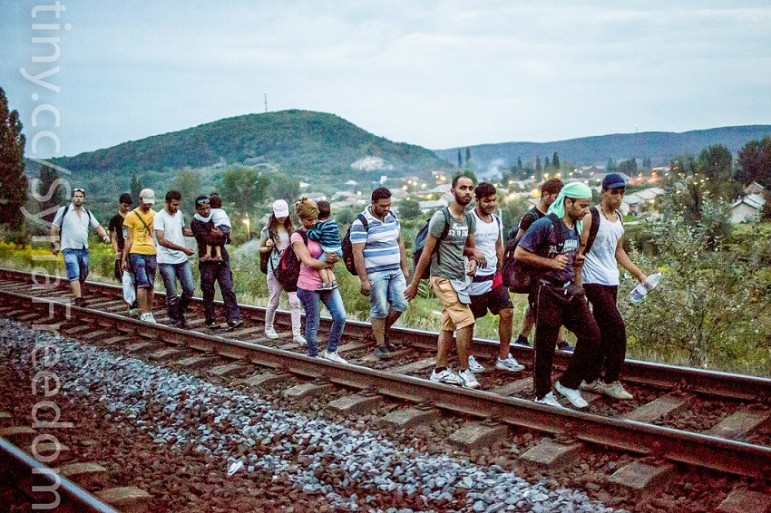
September 15, 2015; CNBC
I was working in Beirut in 2014 when it was reported that the number of Syrian refugees coming across the border had passed the one-million mark. The toll the situation was taking on the country’s housing, employment, education and services was evident, and it was bound to get worse, with the UNHCR registering 2,500 new refugees (more than one a minute) in the country every day.
Worse it has gotten, and the crisis has saddened and inspired individuals around the globe. Non-governmental organizations like Save the Children, International Rescue Committee and CARE are working overtime to respond to the outpouring of empathy and donations to their projects on the ground. UNHCR alone has already raised more than $20 million to support Syrian and other refugees.
Individuals expect that the companies for which they work will also step up, and companies are responding in kind, redirecting funds and expanding their budgets to include organizations providing emergency relief and humanitarian assistance. As reported Friday by CNBC, Google has so far raised more than $11 million after issuing a challenge to match up to $5.5 million. And Apple’s Tim Cook sent an impassioned email to employees in which he announced that the company would make a “substantial” donation to relief agencies, promote customer giving to the Red Cross via iTunes, and match employee contributions 2:1.
Sign up for our free newsletters
Subscribe to NPQ's newsletters to have our top stories delivered directly to your inbox.
By signing up, you agree to our privacy policy and terms of use, and to receive messages from NPQ and our partners.
But as Neal Ungerleider reports in Fast Company, aid workers and social entrepreneurs are using social media and other powerful platforms in creative ways beyond traditional fundraising, tracking projects in real time and connecting refugees with the goods and services they need most. An Amazon Wish List, for instance, operates like a wedding registry, letting donors buy essential goods for refugees in Calais and Greece. Germany’s Flüchtlinge Willkommen (Refugees Welcome) matches volunteers willing to open up their homes with individuals identified, and presumably vetted, by aid groups. While operating already in Germany and Austria, the organization is supporting groups in other countries as far-flung as Australia, South Africa, and Thailand.
Greta Weber in Slate highlights Refugee Maps, a project created to consolidate hundreds of grassroots donation drop-offs, fundraising efforts, and advocacy efforts across the EU. Like Amazon’s Wish List, the project was set up in response to the stream of refugees coming in through Calais. However it is adding additional location points and, according to one of its developers, is well equipped to deal with heavy traffic and large volumes. As Weber points out, projects such as this require a tremendous amount of public participation in order to be most effective, participation the group is hoping to elicit by getting the word out among activists and practitioners and building on the success of its early efforts.
In response to the stream of negative commentary that would typically accompany public statements from Doctors of the World about their humanitarian work in the Mediterranean, Imperio, a small design agency in London, has created Journey of a Refugee, a real-time interactive map that captures positive tweets about refugees and migrants along the very routes they are traveling. As Doctors of the World UK executive director Leigh Daynes expressed to Michael Feeley in The Drum, “A noticeable shift in attitudes came after the shocking image of drowned Syrian toddler Aylan Kurdi was published. We wanted a way to visualize this outpouring of empathy.” What it does, too, is give ordinary citizens an accessible lens into the crisis, offering ways that they can learn more and opportunities to participate. According to Daynes, since the site has gone live, the organization has been inundated with offers of practical help, cash donations and messages of support.
Each crisis that occurs in the world brings opportunities and lessons for improving response times, supply chains, fundraising and the mobilization of volunteers. What’s interesting about the response to crises today, unlike as recently as ten years ago, is the multiplicity of platforms, vehicles and methods available for involvement. Whether it’s traditional companies like JPMorgan Chase matching employee gifts, Uber sending drivers to collect donations of clothing for charities in twenty EU countries, Norwegian activist Gissur Simonarson and his #BuyPens crowdsourcing campaign, or any of the beta projects cited in this article, there is no shortage of ways to strengthen the synapses and connections between projects and people.—Patricia Schaefer










